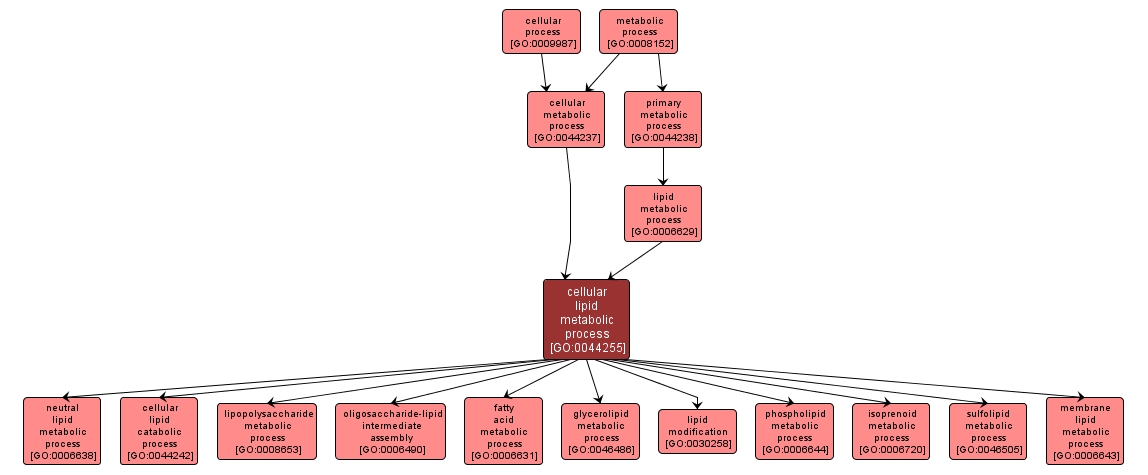GO TERM SUMMARY
|
| Name: |
cellular lipid metabolic process |
| Acc: |
GO:0044255 |
| Aspect: |
Biological Process |
| Desc: |
The chemical reactions and pathways involving lipids, as carried out by individual cells. |
Synonyms:
- cellular lipid metabolism
|
|

|
INTERACTIVE GO GRAPH
|














